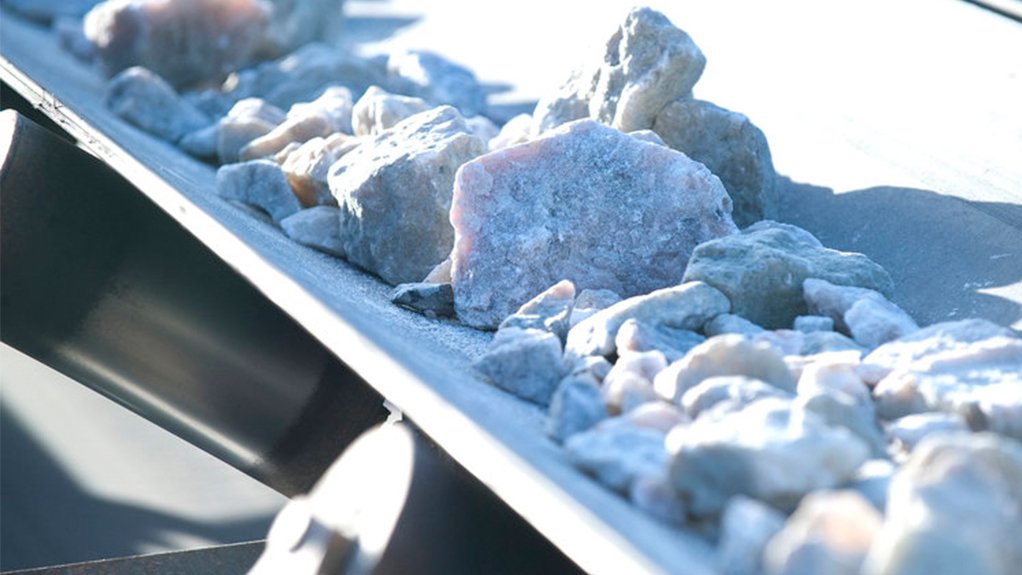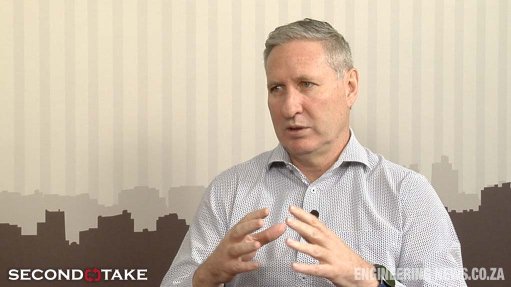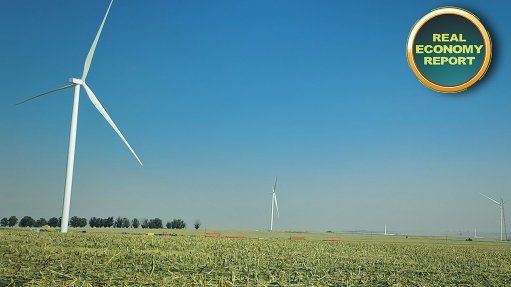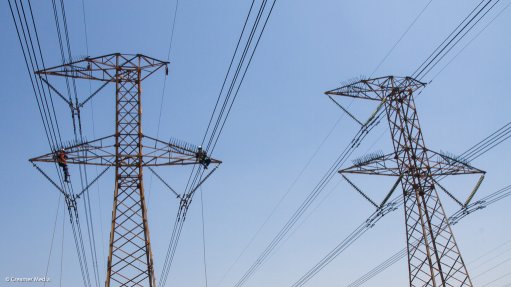Zimbabwe leading sub-Saharan African lithium mining boom
The past three years have witnessed a surge in hard-rock pegmatite lithium mining activity across Southern Africa, according to consultancy firm AmaranthCX.
“While Zimbabwe has emerged as the regional leader, countries like the Democratic Republic of Congo (DRC), Namibia and South Africa are also experiencing exploration and development,” the company says.
Pegmatite, an igneous rock similar to granite, commonly holds quartz, feldspar and mica, but some versions also host gemstones like emeralds, tourmaline and beryl.
Additionally, pegmatites can contain tantalite, the primary ore for tantalum, a crucial element in electronics, and cassiterite, the primary ore of tin. Within the range of lithium-bearing minerals, pegmatites primarily host spodumene.
Lepidolite and petalite are also potential sources.
According to AmaranthCX, Zimbabwe has taken the lead in Southern Africa’s lithium race.
Initially developed by Australian firm Prospect Resources, the Arcadia lithium project is located 20 km east of Harare, not far from the historic Arcturus gold mine, and was acquired by Chinese company Zhejiang Huayou Cobalt in 2022. Huayou has since invested an additional $300-million to build a mine and processing plant targeting output of 450 000 t/y of lithium concentrate.
Meanwhile, located 70 km east of Masvingo and in operation for over a century, Bikita Minerals is said to be the world’s largest producer of petalite concentrate for the glass and glass ceramic industry and has been a significant producer of tantalum since 2018.
The mine was acquired by Hong Kong-based Sinomine Rare Metals Resources for $180- million in 2022. Sinomine’s reported $300- million investment is transforming the mine. A new spodumene concentrate plant with a projected capacity of 300 000 t/y, a new petalite concentrate plant, and a 12 MW solar power plant are all part of the expansion.
Aim-listed Premier African Minerals is advancing the Zulu lithium and tantalum pegmatite deposit, situated 80 km from Bulawayo. Suzhou TA&A Ultra Clean Technology has partnered with Premier, investing $35-million in a pilot plant designed to produce 50 000 t/y of lithium concentrate.
Shenzhen-listed Chengxin Lithium Group acquired a 51% interest in the Sabi Star lithium/tantalum mine in 2021 for $76.5- million. The mine is in Buhera, about 80 km west of Mutare. Chengxin commissioned a $45-million flotation plant in 2023 and has committed a total of $130-million to developing the mine to produce 300 000 t/y of spodumene concentrate.
Meanwhile, located about 65 km east of Hwange and exploited for tin from 1936 to 1994, the Kamativi pegmatite deposit is undergoing a revival. Ownership in recent times appears somewhat opaque.
However, a joint venture between China’s Sichuan PF Technology Group and Zimbabwean company Defold Mine appears to be redeveloping the mine with a new 50 000 t/y spodumene concentrate plant being built.
Other activity in the area includes local private company Zimlithium investigating the reprocessing of historic tailings dumps and Aim-listed Galileo Resources pursuing exploration on nearby properties.
Also in Zimbabwe, the Sandawana mine is located about 60 km south of the mining town of Zvishavane, in the Mberengwa district. This mine’s history is primarily associated with emeralds. Production began in the 1950s, with mining major Rio Tinto acquiring the mine in 1959 and operating it until 1993, when the Zimbabwean State acquired a significant interest. The mine was then closed in the 2000s.
With the resurgence of interest in lithium, State mining company Kuvimba Mining House took over the mine in 2019, although the mine is now reported to have been transferred to another State-owned entity, the Mutapa Investment Fund. The deposit had been embroiled in litigation and accusations of illegal mining; however, it is reported to have reopened last year.
While Zimbabwe is currently leading the pack, there is some activity in other African countries too, AmaranthCX says.
In the DRC, the Monono deposit is embroiled in controversy. The original Monono-Kitolo pegmatite mine was operated from 1915 until the mid-1980s, producing cassiterite and columbite-tantalite (coltan). A majority interest in the deposit was secured by ASX-listed AVZ Minerals in 2018. This position is disputed by Chinese mining major Zijin Mining.
The 54 MW Piana–Mwanga hydroelectric power station, built to service the Monono-Kitolo mine, was shuttered at about the same time as the mine, and should the project be revived then the power station could be brought back into service. Meanwhile, Aim-listed Tantalex Lithium Resources Corporation is looking to exploit the historic Monono tailings resource.
In Namibia, Aim-listed Andrada Mining has revived the historic Uis tin mine in the eponymous pegmatite field. This mine operated from the 1920s until 1990. It predominantly produced cassiterite and coltan. Besides tin, it has now begun producing petalite concentrate as well from a pilot plant.
There has been some controversy around Xinfeng Investment’s Kohero mine, also in the Uis pegmatite field, with questions being asked about its mining licence and its ongoing attempts to export unprocessed ore.
Lepidico is pursuing a $63-million brownfield redevelopment of the Rubicon/Helikon mines within the Karibib pegmatite field 120 km north-west of Windhoek.
Also, China’s Hebei Xinjian Construction is in the process of acquiring the Tantalite Valley Mine in southern Namibia.
In South Africa, there are two small-scale operational spodumene mines.
The first of these is run by London- and A2X-listed listed Marula Mining, which has restarted the historic Blesberg mica mine in the Northern Cape and aims to produce 50 000 t of 6% spodumene ore by December 2026.
Meanwhile, a private party operates a similar small-scale operation at Highbury mine, near Port Shepstone, in KwaZulu-Natal.
Article Enquiry
Email Article
Save Article
To advertise email advertising@creamermedia.co.za or click here
Comments
Announcements
What's On
Subscribe to improve your user experience...
Option 1 (equivalent of R125 a month):
Receive a weekly copy of Creamer Media's Engineering News & Mining Weekly magazine
(print copy for those in South Africa and e-magazine for those outside of South Africa)
Receive daily email newsletters
Access to full search results
Access archive of magazine back copies
Access to Projects in Progress
Access to ONE Research Report of your choice in PDF format
Option 2 (equivalent of R375 a month):
All benefits from Option 1
PLUS
Access to Creamer Media's Research Channel Africa for ALL Research Reports, in PDF format, on various industrial and mining sectors
including Electricity; Water; Energy Transition; Hydrogen; Roads, Rail and Ports; Coal; Gold; Platinum; Battery Metals; etc.
Already a subscriber?
Forgotten your password?
Receive weekly copy of Creamer Media's Engineering News & Mining Weekly magazine (print copy for those in South Africa and e-magazine for those outside of South Africa)
➕
Recieve daily email newsletters
➕
Access to full search results
➕
Access archive of magazine back copies
➕
Access to Projects in Progress
➕
Access to ONE Research Report of your choice in PDF format
RESEARCH CHANNEL AFRICA
R4500 (equivalent of R375 a month)
SUBSCRIBEAll benefits from Option 1
➕
Access to Creamer Media's Research Channel Africa for ALL Research Reports on various industrial and mining sectors, in PDF format, including on:
Electricity
➕
Water
➕
Energy Transition
➕
Hydrogen
➕
Roads, Rail and Ports
➕
Coal
➕
Gold
➕
Platinum
➕
Battery Metals
➕
etc.
Receive all benefits from Option 1 or Option 2 delivered to numerous people at your company
➕
Multiple User names and Passwords for simultaneous log-ins
➕
Intranet integration access to all in your organisation





















